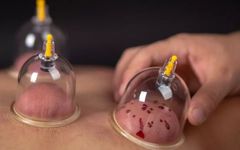Definition of Bloodletting
Bloodletting therapy is a unique acupuncture treatment method in Traditional Chinese Medicine (TCM). It is one of the most commonly used treatment methods since the era of the Neijing, which even considers bloodletting as the first choice for treating diseases and alleviating suffering.
Depending on the patient’s specific condition, a three-edged needle or a thick, sharp needle is used to puncture certain acupuncture points or superficial blood vessels on the patient to release a suitable amount of blood, achieving therapeutic effects.
Functions of Bloodletting1Antipyretic Effect
In TCM, fever is mainly categorized into two types: Yang excess heat and Yin deficiency heat. The antipyretic effect of bloodletting is applicable to the former.
Since Yang Qi excess leads to blood excess, bloodletting can reduce the excess blood, thereby diminishing the evil heat in the blood vessels and normalizing the body’s Qi and blood.
2Analgesic Effect
TCM believes that “where there is flow, there is no pain; where there is pain, there is no flow.” This means that diseases with pain symptoms must have blockages in their meridians.
Bloodletting can directly expel the stagnant pathogenic factors from the meridians, adjusting the blockage situation. Once the meridians are unblocked, the pain can be immediately alleviated.
Many acute diseases, such as acute gastroenteritis and others, have shown rapid and effective results with bloodletting therapy.3Detoxification Effect
The detoxification effect in TCM refers to the symptoms that arise when the body cannot resist toxic evils due to pathological conditions, such as “red thread carbuncles” caused by excessive toxic fire.
Bloodletting not only helps expel the invading toxins from the body but also plays a crucial role in “regulating blood and Qi,” restoring normal bodily functions to inhibit the spread and regeneration of pathogenic factors.4Heat-Reducing Effect
TCM holds that internal heat disturbance can lead to various diseases, often manifesting as irritability, limb pain and swelling, impatience, and even fever and confusion.
Bloodletting can directly expel the heat evil along with the blood, making it suitable for various heat syndromes.
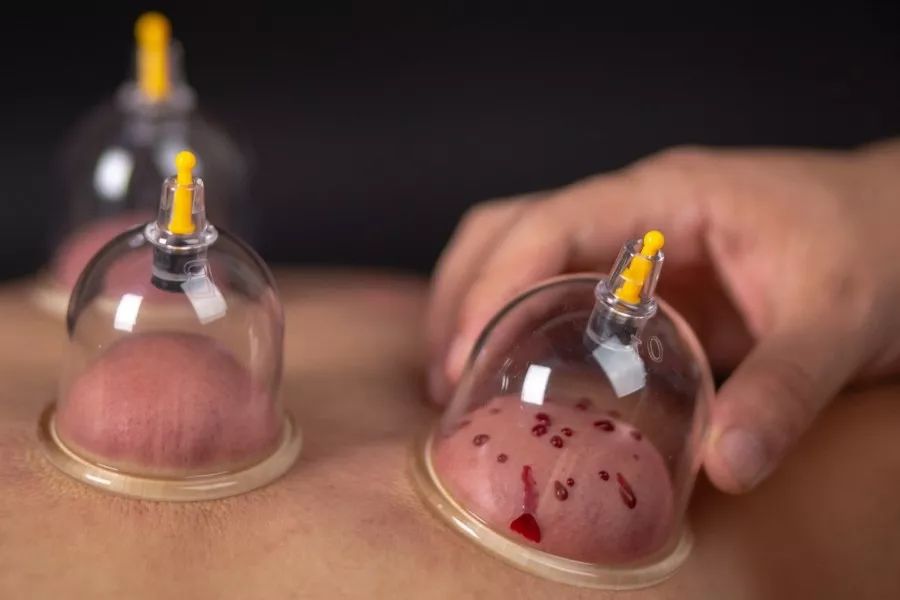 5Swelling-Reducing Effect
5Swelling-Reducing Effect
Swelling and pain are often caused by Qi stagnation and blood stasis, leading to obstruction in the meridians.
Bloodletting can directly eliminate the stagnant Qi and blood along with the pathogenic factors in the local meridians, promoting unobstructed meridian flow and achieving the goal of reducing swelling.
6Itch-Relieving Effect
Itching is a manifestation of wind evil existing in the blood vessels, hence the treatment principle of “treating wind by first treating blood; when blood flows, wind will naturally disappear.”
Bloodletting regulates blood and Qi, ensuring smooth blood flow, thus achieving the effect of dispelling wind and relieving itching.7Numbness-Relieving Effect
Qi deficiency cannot guide blood to the extremities, or blood deficiency fails to nourish, often resulting in numbness symptoms.
Using fine needles to prick the acupuncture points on the affected limbs to release a small amount of blood for treating numbness is guided by the theory of blood moving Qi, yielding good results.
8Anti-Nausea Effect
Acute vomiting often belongs to excessive heat or liver Qi counterflow invading the stomach or food stagnation. Bloodletting can drain heat, pacify liver counterflow, and facilitate the downward movement of food stagnation in the stomach, thus alleviating nausea and vomiting.
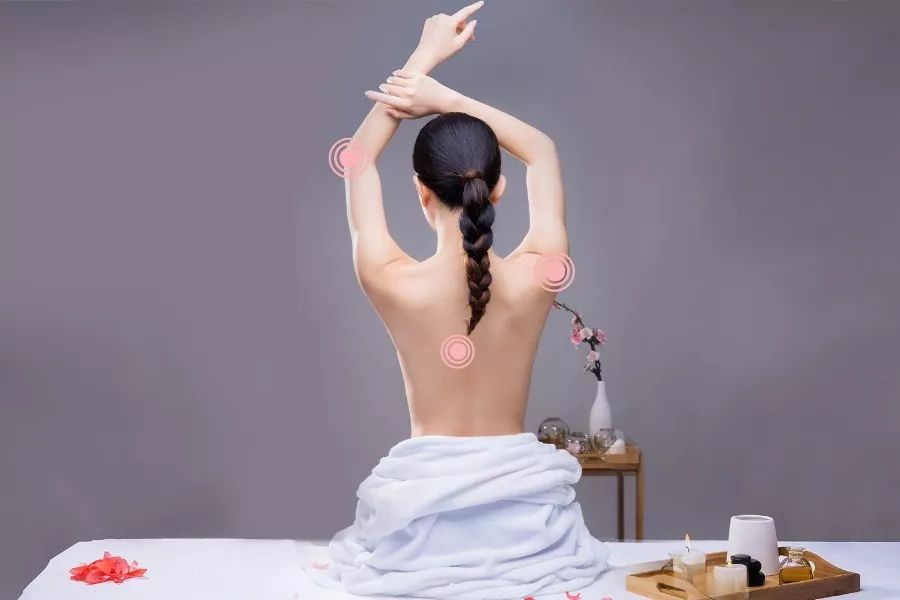 Methods of Bloodletting01Segmental Bloodletting Method
Methods of Bloodletting01Segmental Bloodletting Method
This method selects acupuncture points for bloodletting based on the location of the disease. For diseases occurring in the head, puncture the Taiyang point; for diseases above the navel, puncture the Shizhu or Quxi points; for diseases below the navel, puncture the Weizhong point. These points are located at superficial large veins and are suitable for puncturing; the Ling Shu states that the Taiyin, Jueyin, and Yangming meridians are all blood-rich meridians. For those with excess blood, bloodletting is advisable, and the Taiyang point is an extraordinary point for treating head and facial diseases with remarkable effects, while Shizhu and Weizhong are connecting points, mainly addressing visceral diseases, hence their frequent use by practitioners.
In clinical practice, it is often necessary to combine with other acupuncture points.This method is mainly used for deeper diseases or visceral diseases, where there are local primary symptoms accompanied by systemic symptoms.
For example, for headaches with red, swollen eyes accompanied by fever, bloodletting at the Taiyang point and puncturing Hegu point; for headaches and sore throat with fever, bloodletting at the Taiyang point and puncturing Shaoshang and Quchi points; for red, swollen, painful breasts with fever, bloodletting at the Shizhu point combined with local hot compresses; for upper abdominal pain and vomiting with fever, bloodletting at the Shizhu point and puncturing Zhongwan and Liangqiu points; for right lower abdominal pain with constipation and fever, bloodletting at the Weizhong point and puncturing Zusanli and Tianshu points; for lower abdominal pain with purulent blood stools and fever, bloodletting at the Weizhong point and puncturing Quchi and Tianshu points, etc.
02Meridian Bloodletting Method
This method is guided by the theory of “where the meridian passes, the treatment applies” to perform bloodletting along a specific meridian or several meridians affected by disease. In clinical practice, the disease is categorized according to the meridian, and bloodletting is performed along the surface meridians, following the rules of meridian pathways and collateral channels.
This method is not limited to acupuncture points or painful areas but can also involve puncturing superficial veins along the course of the affected meridian, emphasizing “better to lose the point than to lose the meridian.”
For example: for acute low back pain occurring on both sides of the spine, it belongs to the obstruction of the Foot Taiyang meridian, puncture the Weizhong point and bloodletting at the most painful area of the lower back; for pain along the spine, puncture the Du meridian at the Renzhong point and bloodletting at Qihai and Taichong points; for wind-heat mastitis with sore throat and difficulty breathing, puncture the Shaoshang point and bloodletting at Tianzhu; for vertex headache, dizziness, and eye swelling, puncture the Baihui and Taiyang points and bloodletting at Fengchi point, etc.
 03Pattern Differentiation Bloodletting Method
03Pattern Differentiation Bloodletting Method
This method is guided by the theories of organ differentiation, Qi and blood differentiation, and meridian differentiation to select acupuncture points and perform bloodletting based on the identified patterns.
For example: for women with dysmenorrhea, cold pain in the lower abdomen, where abdominal pain precedes menstruation, it indicates Qi stagnation and blood stasis, with obstruction in the Foot Three Yin meridian, puncture the Sanyinjiao point for bloodletting, as it benefits the liver and kidneys and regulates the menstrual cycle, similar to the effects of Si Wu Tang, puncturing Qihai to regulate Qi, and moxibustion at Guanyuan to warm the uterus, collectively achieving the effects of regulating Qi and blood;
for skin itching and redness, indicating heat in the blood, puncture Sanyinjiao and Xuehai for bloodletting to regulate blood, clear heat, and regulate menstruation, supplemented by puncturing Quchi to dispel wind and Shaofu to clear heart heat;
for acute ankle sprains, indicating local Qi obstruction and blood stasis, puncture Ah Shi and Taichong points for bloodletting to promote Qi and invigorate blood;
for carbuncles and boils, based on the principle that “all pain and itching belong to the heart,” puncture the Quxi point for bloodletting to drain heat from the heart, and if accompanied by fever, combine with puncturing Dazhui and Quchi points. If the sore appears on the neck and back, combine with puncturing Weizhong for bloodletting to clear heat from the Taiyang meridian; if it appears in the hypochondrium, combine with puncturing Yanglingquan for bloodletting to clear heat from the Shaoyang meridian; if it appears in the limbs, follow the meridian to select points or puncture Ah Shi for bloodletting to drain meridian heat and detoxify.
04Local Bloodletting Method
This method involves performing bloodletting at the local site of the disease, either at acupuncture points or in localized areas, and is generally suitable for localized and superficial diseases.
For example: for swollen and stiff tongue, puncture Jinjing and Yuye points for bloodletting; for toothache and gum swelling, perform bloodletting at the affected area, puncturing Hegu; for psoriasis with itching and scaling, use plum blossom needles to prick the local area for bloodletting, combined with cupping; for late-stage filariasis presenting as “rubber leg,” puncture the affected leg in various locations for bloodletting, puncturing Zusanli and Sanyinjiao; for joint sprains and swelling, perform bloodletting at the painful points, etc.
05Emergency Bloodletting Method
This method is specifically used for emergencies and critical conditions, with four main characteristics:
① At the extremities, or puncturing the twelve jing points;
② At superficial large veins;
③ Puncturing extraordinary points;
④ Selecting points on the Du meridian and Pericardium meridian.
This method provides strong stimulation, rapid effects, and can open meridians, drain heat, and awaken consciousness.
For example, for syncope, puncture Shixuan for bloodletting and puncture Renzhong; for stroke with locked jaw, puncture Taiyang, Quxi, and Weizhong for bloodletting, or puncture the twelve jing points, puncturing Yongquan and Laogong; for snake bites, if on the upper limb, puncture Quxi and Bayejia for bloodletting; if on the lower limb, puncture Sanyinjiao and Bayifeng for bloodletting.
For heatstroke, puncture Quxi and Shixuan for bloodletting, puncturing Yongquan, etc.

Corresponding Acupuncture Points for Different Symptoms1Cerebral Hemorrhage (Stroke)
For any bleeding, there must be unconsciousness, thus puncture Yintang, Taiyang, Taichong, and Shixuan for bloodletting 1-5 drops, which can promote early awakening and reduce the degree of hemiplegia. Remember: if a patient is unconscious for more than 24 hours, the rate of hemiplegia is over 90%. If it exceeds 72 hours, there is a 100% chance of hemiplegic sequelae. It is extremely difficult to treat. Therefore, promoting early awakening of the patient is a priceless secret technique; once the patient awakens, puncture Dazhui, Quchi, and Weizhong for bloodletting, and the patient may have a chance of recovery.
2Bone Nerve Pain
If it belongs to gallbladder meridian pain (outer thigh pain), carefully check Yanglingquan and Fenglong points for any distended blood vessels; if present, bloodletting often leads to recovery.
3Long-lasting Carbuncles and Boils
Puncture the heart point after bloodletting.
4Initial Stage of Conjunctivitis, Stye Not Yet Pus-Formed
Puncture the Taiyang point for bloodletting, squeezing out 7-9 drops of blood, and squeezing 3-5 drops from the tip of the middle toe will lead to recovery by the next day.
5Rheumatism
Puncture 3 inches beside the third, fourth, and fifth thoracic vertebrae for bloodletting, and many patients with severe conditions have recovered after 1-2 treatments.
6Gastric and Duodenal Ulcers
Puncture the blue veins from Neiting to Jiexi for bloodletting, and near the outer ankle; for gastric ulcers, look for blood vessels within 0.5 inches above and 2.5 inches below the Jiaokou point.
7Chronic Nephritis
(1) Puncture Ruyushu for bloodletting if there is yellow fluid; once the yellow fluid is gone, the patient will recover.
(2) Around the kidneys.
(3) Puncture around the navel (do not puncture the center of the navel).
8Hepatitis Bloodletting
Puncture Yangjiao, Zusanli, Quxi, Yanglingquan, and Sanyinjiao.
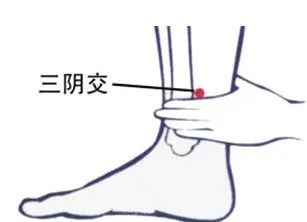 9Cirrhosis with Ascites
9Cirrhosis with Ascites
Use the acupuncture points for hepatitis plus: Shenyu, Yaoyushu, and Jiaokou (0.5 inches above and 0.5 inches outside), and Ganyu.
10Effective Points for Hemorrhoids
(1) Chaojiao point (inside the mouth), find the white spot, and 1-3 treatments will lead to recovery.
(2) For red, swollen, and ulcerated anal areas, puncture Weizhong point, and the pain will decrease.
11Insomnia
(1) Shenmen, Hengjian, Zusanli.
(2) Dazhui, Shenda, Zhongwan, puncture and then apply cupping.
12Cervical Spondylosis
Painful points, Tianzong, Jianzhen, Shizhe points.
13Chest Internal Injury
Puncture Dazhui, Jianjing, and then the injured area.
14Shoulder Periarthritis
Puncture Shenqiao (1.5 inches below Yanglingquan), Shizhe point, and see effects after one treatment.
15Acute and Chronic Throat Diseases
Puncture Dazhui, Erjian, Erbei veins, Shaoshang, Quchi, Taiyang, bloodletting will reduce pain.
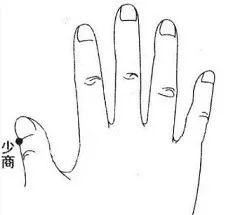 16Impotence
16Impotence
(1) Puncture Shenyu, Fuliu for bloodletting, Guanyuan, and apply cupping at Shenyu for 15 minutes.
(2) Puncture Sanyinjiao, Mingmen, apply cupping at Shenyu, Xuehai.
17Hypertension
Puncture Taiyang, Dazhui, Erjian, Quchi, bloodletting will lower blood pressure immediately; note: do not drink water within one hour after bloodletting, otherwise the effect will be diminished.
18Asthma
Puncture Dazhui, Feishu, Fengmen, Gaozong, Liexue for bloodletting. Zhongfu, apply cupping at Dazhui for 15 minutes.
19Hyperlipidemia
Puncture Dazhui, Taiyang, Yaoyushu, Weizhong, Quchi.
20Rheumatic Heart Disease
Puncture Yangjiao, Weizhong, Taiyang.
21Otitis Media
Puncture the outer ankle joint for bloodletting.
22Epilepsy
(1) Puncture Taiyang, Quxi, Weizhong, Yangjiao.
(2) Puncture Shaoshang, Renzhong for bloodletting. Ganyu, apply cupping at Dazhui for 15 minutes.
(3) Find painful points at the lower part of the back of the neck and puncture the Neiguan point with plum blossom needles for bloodletting.
23Mental Illness
Puncture Taiyang, Quxi, Weizhong, Shuchong, Yangjiao, Fenglong, Xinshu, and apply cupping after bloodletting.
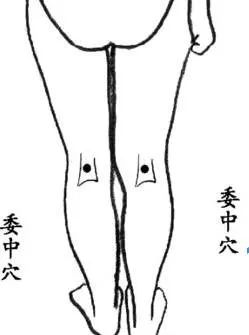
When all methods fail for chronic diseases, one should perform bloodletting on the blood vessels at the ankles, elbows, wrists, and knees, which may yield unexpected effects.
Note: Bloodletting should generally not be performed at night; it is best done in the late morning or noon. This method is not suitable for individuals with weak constitutions, pregnant women, or those with coagulation disorders. It is particularly emphasized that the technique should be steady, precise, and gentle, rather than forceful, and the amount of bloodletting should not be excessive.
Disclaimer: The content of this article, if it involves formulas or therapies, is for reference only and should not be used indiscriminately. The article and images are sourced from the internet; if there is any infringement, please contact for removal.
Share with those who care.
The more people see it, the more health there will be!
Today's Recommendations

